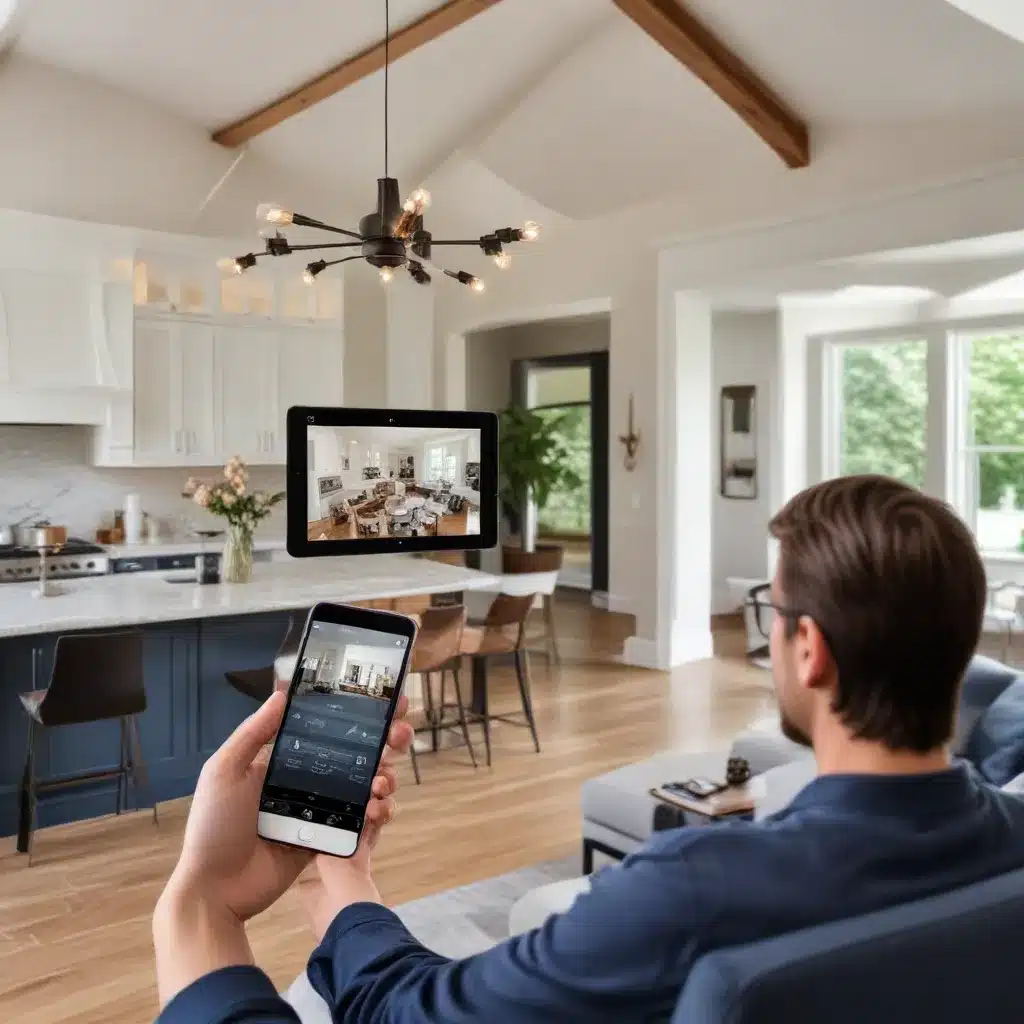
Smart home technology has revolutionized the way we interact with and manage our living spaces. As an experienced home improvement consultant, I’m excited to share insights on seamlessly integrating these innovations into your renovated home. Whether you’re retrofitting an existing property or designing a new construction, smart tech can deliver unparalleled benefits in energy efficiency, comfort, convenience, and security.
Benefits of Smart Home Integration
Improved Energy Efficiency: Smart home systems can significantly reduce your energy consumption and costs. Automated HVAC controls, smart lighting, and integrated renewable energy sources work together to optimize usage based on occupancy, schedules, and real-time data. This not only lowers your monthly utility bills but also supports a more sustainable lifestyle.
Enhanced Comfort and Convenience: Smart home features put total control at your fingertips. Adjust lighting, temperature, and entertainment with voice commands, mobile apps, or pre-programmed routines. Automated door locks and security cameras provide peace of mind, while connected appliances simplify daily tasks. The result is a truly personalized living experience tailored to your preferences.
Increased Home Security: Safeguarding your property has never been easier. Smart video doorbells, motion sensors, and surveillance cameras allow you to monitor your home remotely and receive instant alerts. Advanced intrusion detection and automated response features can even deter potential break-ins. Integrating these systems into your renovated home enhances overall safety and security.
Renovated Homes and Smart Tech
Whether you’re refurbishing an existing space or starting from scratch, incorporating smart home technology is a strategic investment that can transform your living experience.
Retrofitting Existing Homes: Retrofitting smart features into a renovated home requires careful planning and execution. The good news is that many wireless, battery-powered, and plug-and-play smart devices make retrofitting a relatively straightforward process. Focus on quick wins like smart lighting, video doorbells, and programmable thermostats to ease into the smart home experience.
Designing for New Construction: When building a new home, you have the unique opportunity to design smart technology into the architectural blueprint. Work closely with your builder or interior designer to seamlessly integrate centralized control systems, automated climate management, and whole-home entertainment networks. This holistic approach ensures your smart features are optimized for maximum performance and efficiency.
Integrating Smart Devices: From voice assistants and smart speakers to connected appliances and home security systems, the smart home ecosystem offers a vast array of compatible devices. The key is finding the right balance between functionality, interoperability, and user-friendliness. Prioritize products that work with your preferred smart home platform or voice control technology for a cohesive, intuitive experience.
Automation and Control Systems
The heart of a smart home lies in its automation and control systems. These integrated networks power a wide range of features, from lighting and climate to security and entertainment.
Lighting and Climate Control: Automated lighting systems can turn on, off, or dim based on occupancy, time of day, or pre-programmed scenes. By syncing these with your HVAC controls, you can achieve exceptional energy savings and comfort. Advanced climate control features like zoning, geofencing, and predictive analytics further enhance the user experience.
Security and Monitoring: Smart home security encompasses connected locks, surveillance cameras, and alarm systems. These features allow you to monitor your property, control access, and receive real-time notifications, all from your smartphone. For added safety, consider integration with emergency services and facial recognition capabilities.
Appliances and Entertainment: Smart home tech extends to your kitchen, laundry room, and media spaces. Connected appliances can be remotely controlled, provide usage data, and even order supplies automatically. Integrating your TV, audio system, and streaming devices creates an immersive, whole-home entertainment experience that can be managed with a single interface.
Interoperability and Connectivity
Achieving a truly seamless smart home experience requires robust interoperability and connectivity across all your devices and systems.
Smart Home Platforms: While proprietary smart home systems offer comprehensive control, the rise of open-source platforms like Reluctant Renovator’s preferred platform provides greater flexibility and compatibility. These systems allow you to mix and match devices from various manufacturers, creating a tailored solution for your home.
Wireless Communication: Reliable wireless connectivity is essential for smart home integration. Leverage Wi-Fi and Bluetooth technologies for convenient device pairing and mesh networking to ensure uninterrupted coverage throughout your renovated home.
Remote Access and Management: Smart home features are truly powerful when you can control and monitor them from anywhere. Mobile apps and voice assistants empower you to adjust settings, receive alerts, and even troubleshoot issues remotely, ensuring your home remains secure and efficient, even when you’re away.
Sustainability and Energy Efficiency
As an eco-conscious home improvement consultant, I’m particularly passionate about the intersection of smart home technology and sustainable living.
Renewable Energy Integration: Integrating solar panels, smart meters, and energy storage systems into your renovated home allows you to generate, monitor, and manage your own renewable energy. This not only reduces your carbon footprint but also insulates you from fluctuating utility prices.
Energy Monitoring and Optimization: Smart home systems provide granular insights into your energy consumption, enabling you to identify and address inefficiencies. Real-time data, automated controls, and predictive analytics work together to optimize your HVAC, lighting, and appliance usage, cutting costs and environmental impact.
Sustainable Design Considerations: When planning your smart home renovation, keep passive house principles in mind, such as thermal insulation, airtight construction, and optimized window placement. Complement these with water-saving fixtures, greywater systems, and smart irrigation for a truly sustainable living environment.
Embracing smart home technology during your renovation project can transform your living experience, reduce your environmental footprint, and future-proof your investment. By seamlessly integrating these innovations, you can enjoy unparalleled comfort, convenience, and cost savings for years to come. To learn more, be sure to visit Reluctant Renovator, a trusted resource for all your home improvement needs.



